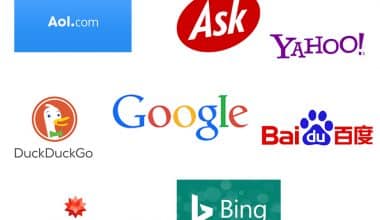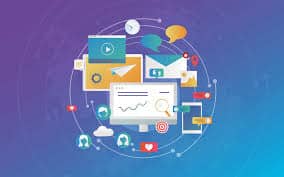As more technology tools arose to fulfill the needs of modern marketing, these Marketing Technology solutions became known as MarTech. Marketing is a function that increasingly relies on technology. The concept of combining names has also appeared in other industries, such as DevOps (Development Operations), a word used in the area of software development. Let’s see the definition of MarTech, how to build its stack, and its impact on the marketing industry more closely.
What is MarTech?
Martech is the software that marketers use to maximize their marketing efforts and achieve their goals. It makes use of technology to develop, execute, and track campaigns and other marketing approaches. Fundamentally, it can make the duties of marketers easier. The term “MarTech stack” refers to a collection of marketing technology; we’ll go into more detail about this later. In a multi-touchpoint, omnichannel context, these products are frequently utilized to expedite marketing activities.
What Makes MarTech and AdTech Different?
The names “MarTech” and “AdTech,” short for advertising technology, are not interchangeable, just as marketing and advertising are not. The main distinction is that MarTech is used to really build, operate, and manage campaigns and other marketing initiatives, whereas AdTech is only used to influence buyer behavior through advertised offerings.
AdTech, in more technical terms, refers to advertising methods and management tools such as demand-side platforms (DSPs), supply-side platforms (SSPs), and ad exchanges. It focuses more on technology that immediately brings advertisements to life. The utilization of customer relationship management (CRM) software, social media management tools, email marketing solutions, and other technologies are referred to as MarTech. It includes a larger range of technology solutions that marketers employ throughout the digital marketing process.
While MarTech and AdTech are equally crucial to your brand strategy, we’ll concentrate on MarTech today.
The Importance of MarTech
The role of technology in marketing is growing. The marketing landscape is shifting as MarTech becomes more sophisticated, allowing firms to better keep up with the ever-changing—and fragmented—customer journeys. In short, marketing technology is critical to the future of modern marketing.
Furthermore, marketing technology is vital since it considers execution requirements from beginning to end. It enables marketers to scale their marketing operations holistically. Third, MarTech is significant since it enhances our ability to interact and work with both opponents and customers. Developing these B2B and B2C interactions has a positive snowball impact on the ties you build with your consumers.
Types of MarTech
MarTech can be classified in a number of ways, but we prefer to think of it in terms of the demands of marketing technology: management, social optimization, campaign reach, and insight production.
#1. Management
Content management, vendor organization, product management, budgeting, and personnel management are all examples of Management Management, a broad area of MarTech applications. The spark for the rest of your marketing plan is optimizing these components of your company’s needs. The implementation of excellent management systems guarantees that firms can rapidly and easily extract marketing material, make smart recommendations, and maintain accuracy in reporting.
#2. Social Optimization
Influencer management, user-generated content (UGC), customer relationship management (CRM), and other social media methods may be organized and measured. Technologies that assist in the automation of social techniques allow you to connect with online communities more effectively.
#3. Campaign Reach
With the help of this third form of MarTech, brand campaign executions can reach audiences through remarketing. These solutions are all about assisting in the cultivation and expansion of business-to-business (B2B) and business-to-consumer (B2C) relationships.
#4. Generation of Insights
Analytics from sources such as Amazon Attribution enables marketers to effectively and efficiently understand the performance of their campaigns, content marketing, and social media. This data-driven category aids in making sense of large datasets.
Your choice of MarTech tools will be heavily influenced by the type of business you run, the type of product you offer, your individual demands, and/or your targeted outcome or aim. Don’t worry if your marketing team is having trouble deciding on just one. Fortunately, MarTech “stacks” allow you to combine many systems simultaneously. Let’s take a closer look at what these implications for your marketing automation.
What is a MarTech Stack?
A MarTech stack is a collection of MarTech systems that collaborate to better marketing efforts—a it’s network of marketing technology tools. Your stack will most likely be based on the specific goals of your company or brand. This allows you to adjust processes depending on your clients’ individual habits and receive a greater return on investment.
With a full MarTech stack, you can attract, engage, and understand your customers while driving conversion. It covers all areas to ensure you’re interacting with the correct audience at the right time of the buying cycle.
A digital asset management (DAM) system is typically included in stacks. A DAM is a centralized resource for managing content and assets and is considered the heart of any MarTech stack. It is critical for consistency across touchpoints. This will be a significant factor as you begin to create your own stack.
It is vital that you continue to manage your stack once you have built it. Keeping your MarTech tools in sync will become a crucial component of your marketing strategy—and it’s a constant task. Nevertheless, before we go too far ahead of ourselves, let’s go over how to really build your stack.
What is in a MarTech Stack?
You’re undoubtedly wondering what technologies make up a MarTech stack. Let’s take a look at some of the most popular solutions used by SMBs today.
#1. Content Marketing System (CMS)
A content management system (CMS) is what organizations use to manage their website pages, whether it’s a basic blog or an enterprise corporate site.
CMSs are built with usability in mind, which means they require little to no HTML expertise and can be used effectively by marketers who cannot code.
Since content marketing, in particular, becomes a major component of many firms’ strategies, investing in a CMS is critical to operating and controlling such strategies in terms of content creation.
#2. Email Marketing Platform
Despite the popularity of other digital marketing domains, email remains a critical and key component of plans and stacks.
In today’s marketing landscape, data analysis mixed with email automation makes for a deadly combination, allowing firms to automatically send out highly targeted messages that enhance conversion and retention rates.
Email marketing platforms are frequently incorporated with general inbound marketing solutions available today.
#3. Advertising Technology
The management of digital campaigns is known as AdTech, a subset of MarTech.
These technologies enable advertisers to provide tailored ads to the most desirable demographics, track the effectiveness of those campaigns by tracking engagement and clicks, and then utilize that data to direct future efforts.
Having a platform that can collect data allows you to zero in on which ads worked and which didn’t, allowing you to better optimize your ad budget and get your advertising in front of prospects who are most likely to convert.
#4. Social Media Administration
Because social media is such an important element of modern corporate engagement, technology that helps manage these platforms is a must-have.
Not only are social media platforms essential for your content strategy, but they are also valuable resources for prospects and clients seeking customer service and other information.
Monitoring your social media engagement using a MarTech solution allows you to discover which content performs best across all of your platforms and provides insight into how effective your interactions with people are.
Of course, social media is an important source of advertising, so it’s also useful to be able to track the performance of specific campaigns you’re running through LinkedIn, Google, or Facebook paid ads.
#5. Search Engine Optimization (SEO) Tools
Search engine optimization is another crucial factor for firms, and MarTech solutions that aid with SEO are critical.
SEO tools assist businesses in determining the best strategy for ranking their content on search engines, and as people rely more and more on the internet to locate suppliers, SEO becomes even more vital.
This is especially true in 2020 when traditional advertising has suffered such a drastic fall in comparison to digital advertising—businesses must have a strategy that allows them to compete in search rankings to remain competitive.
#6. Customer Relationship Management (CRM)
CRMs and other MarTech tools are frequently utilized by B2B companies to align marketing and sales efforts.
A CRM gives your marketers and sales professionals access to all the customer data they need to maintain connections and assist prospects to move down the funnel.
This is often given to stakeholders through a single dashboard, where they have access to everything they need, such as a client’s previous history with you, outstanding orders, customer care difficulties, and even social media activity involving yourself and competitors.
This makes building and maintaining better relationships easier, with the added benefit of a more simplified system for employees, which increases productivity and happiness.
Read Also: MARKETING ATTRIBUTION MODELS: Types & 2023 Best Options
Building a MarTech Stack
Developing a MarTech stack begins with establishing your goals. Your response to this question will launch the process, but let’s go over the entire list of critical stages.
#1. Marketing Metrics
Begin by determining the previously indicated intended outcome. This may depend on your business model, brand type, sales cycle length, and other factors. Establishing goals or key performance indicators (KPIs) allows you to chart a course to success.
#2. Unique value proposition
Consider the distinctive value of your brand when you develop that aim. How do you distinguish yourself? What distinguishes your company from others in your industry? You can find suitable MarTech tools and resources by understanding these differentiators.
#3. Capabilities
Before diving into new chances, no matter how thrilling, it’s critical to assess your present toolbox. Are there any systems that you aren’t using as much as you should? Are there any that you might utilize differently? Keeping this in mind prevents you from doubling-dipping into prospects for your company that already exist.
#4. Customer journey
Develop your marketing stack depending on your consumers’ unique path through the marketing funnel. Naturally, before you can influence these touchpoints, you must first understand them.
So you’ve answered all of these important questions and examined these aspects of your firm. What comes next? It’s time to start assembling the MarTech stack.
The Enterprise Digital Marketing Architecture and MarTech
The MarTech Stack can be best understood in the context of the four technology levels of the business digital marketing architecture, according to Theresa Regli of Real Story Group, a digital asset management expert. These strata are as follows (from bottom to top):
- Enterprise Data Foundation: This consists of business intelligence, analytics, and customer and product data.
- Key Marketing Technology Platforms – These technologies include various core components that feed higher-level technologies and services, such as digital asset management, marketing automation, social media engagement, and web content management.
- Prototypical Marketing and Sales Services – These technologies rely on the layers beneath them to streamline the execution of particular operations, such as e-commerce administration, content delivery networks, online video platforms, and self-service portals. It should be noted that all of these technologies require some type of content.
- Major Channels – This top layer covers the various channels used by marketers to contact their target audience through marketing methods, such as email, mobile, social, television, print, websites, and even kiosks. These channels are touchpoints in the context of the buyer’s journey.
Conclusion
Marketing technology changes quickly, and staying current has become an essential element of a marketer’s job. To stay current and give the best value, the most up-to-date tools are required.
Because marketing and the technologies employed inside it are constantly changing and expanding to meet new demands and problems, it’s critical to grasp what’s ahead.
- Trends in Technology Advertising In 2023: Impact Of Digital Advertising
- Sales Enablement Strategy: Simple Guide to Building an Effective Strategy
- MARKETING TRENDS in 2023: What You Should Know!! (Detailed)
- MARKETERS: Meaning, Skills, Salary & What You Should Know






